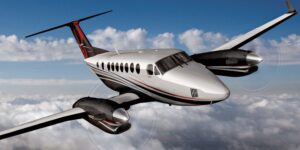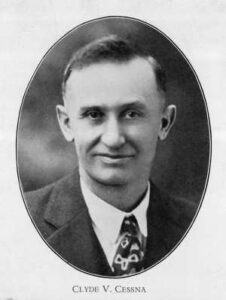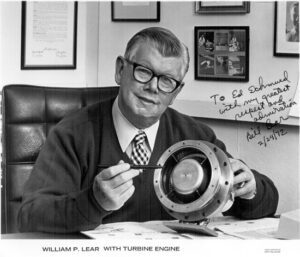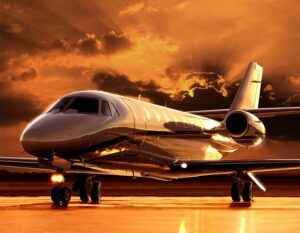 The Beechcraft King Air is a popular aircraft model for air charter services. It has a proven track record of reliability, versatility, and comfort, making it an ideal choice for both business and leisure travel. When it comes to air travel, two popular options are the Beechcraft King Air and a jet. While both offer fast and convenient transportation, there are some significant differences between the two that are worth considering.
The Beechcraft King Air is a popular aircraft model for air charter services. It has a proven track record of reliability, versatility, and comfort, making it an ideal choice for both business and leisure travel. When it comes to air travel, two popular options are the Beechcraft King Air and a jet. While both offer fast and convenient transportation, there are some significant differences between the two that are worth considering.
Speed and Range: One of the primary differences between a King Air and a jet is their speed and range. Jets are generally faster than King Airs, which means they can cover greater distances in less time. Jets also have longer ranges, allowing them to fly non-stop for thousands of miles. In contrast, while the King Air is still fast, it has a shorter range, making it better suited for regional travel.
Size and Capacity: Another key difference between the two is their size and capacity. Jets are typically larger and can carry more passengers and cargo than King Airs. For example, a typical jet may seat anywhere from six to eighteen passengers, while a King Air may seat up to nine passengers. Jets also tend to have more cabin space and amenities, such as a galley or a lavatory with a shower, compared to the more compact cabin of a King Air.
Cost: Cost is another factor that distinguishes the two. Jets are generally more expensive to operate and maintain than King Airs. They also require more fuel and have higher hourly rates. As a result, jets tend to be a more costly option for air travel, making them more suitable for business or luxury travel.
Versatility: On the other hand, the King Air is highly versatile and can operate from shorter runways than most jets. This makes it ideal for traveling to remote or smaller airports that jets may not be able to access. The King Air is also able to fly at lower altitudes than jets, allowing for a smoother ride and a more scenic view.
The choice between a King Air and a jet ultimately depends on the specific needs of the traveler. While jets offer faster travel, more amenities, and greater capacity, they come at a higher cost. The King Air, on the other hand, is more versatile and cost-effective, making it a popular choice for regional travel and accessing remote destinations.
The King Air was first introduced in the 1960s and has since undergone several upgrades to its design and features. Today, it is available in several models, including the King Air 250, King Air 350i, and King Air 360, each with its own unique set of capabilities and specifications. One of the key features of the King Air is its ability to operate from shorter runways, including those at smaller regional airports. This makes it an ideal aircraft for reaching destinations that may not be easily accessible by commercial airlines or larger private jets. The King Air is also known for its exceptional performance in a variety of weather conditions. It can operate in hot and high altitude environments, making it a reliable choice for travel to mountainous regions or during the summer months. Additionally, its advanced avionics system allows for precise navigation and improved safety during flights.
In terms of comfort, the King Air offers a spacious cabin that can accommodate up to nine passengers. The interior is designed with high-quality materials, comfortable seating, and ample storage space. It also features a fully enclosed lavatory and a refreshment center, providing a comfortable and convenient travel experience. For business travelers, the King Air can be equipped with in-flight Wi-Fi, allowing for productive work during flights. It also offers a quiet and private environment for conducting business meetings or conversations.
The Beechcraft King Air is manufactured by Textron Aviation, a subsidiary of Textron Inc., which is a multinational aerospace and defense conglomerate based in Providence, Rhode Island, USA. Textron Aviation is a leading general aviation company and the manufacturer of several well-known aircraft, including the Beechcraft Bonanza, Cessna Citation, and Hawker jets.
Overall, the Beechcraft King Air is an excellent choice for air charter services. Its reliability, versatility, and comfort make it a popular choice among both business and leisure travelers. If you are in need of air charter services, consider the King Air for your next flight. Next week we will take a deeper dive into Textron Aviation and how it impacts the air charter industry, until then Be Social, Fly Private!


 Cessna Aircraft Company was founded by Clyde Cessna in 1927. Clyde Cessna was an aviation pioneer and one of the early manufacturers of airplanes in the United States. He began his career as a barnstormer and then moved on to designing and building his own aircraft. In 1911, he built and flew his first airplane, the Silverwing. After several successful aviation ventures, Clyde Cessna founded the Cessna Aircraft Company in Wichita, Kansas, along with his nephews Dwane Wallace and Dwight Wallace. Today, Cessna is a well-known manufacturer of general aviation aircraft, and its planes are used for a variety of purposes, including personal and business travel, flight training, and agricultural applications. Cessna (now a subsidiary of Textron Aviation) produces a range of business jets, including the Citation series. The exact number of Cessna jets used for private aviation is difficult to determine, as it can vary from year to year and also depend on factors such as geography, market demand, and the overall economy. However, it’s safe to say that Cessna business jets are widely used in private aviation, as they are known for their reliability, efficiency, and comfort. According to the General Aviation Manufacturers Association (GAMA), Cessna delivered 78 business jets in 2020, which includes the Citation series as well as the larger Cessna Hemisphere. The number of Cessna jets in private use would be a subset of this number, as some of these deliveries may have gone to commercial or government customers.
Cessna Aircraft Company was founded by Clyde Cessna in 1927. Clyde Cessna was an aviation pioneer and one of the early manufacturers of airplanes in the United States. He began his career as a barnstormer and then moved on to designing and building his own aircraft. In 1911, he built and flew his first airplane, the Silverwing. After several successful aviation ventures, Clyde Cessna founded the Cessna Aircraft Company in Wichita, Kansas, along with his nephews Dwane Wallace and Dwight Wallace. Today, Cessna is a well-known manufacturer of general aviation aircraft, and its planes are used for a variety of purposes, including personal and business travel, flight training, and agricultural applications. Cessna (now a subsidiary of Textron Aviation) produces a range of business jets, including the Citation series. The exact number of Cessna jets used for private aviation is difficult to determine, as it can vary from year to year and also depend on factors such as geography, market demand, and the overall economy. However, it’s safe to say that Cessna business jets are widely used in private aviation, as they are known for their reliability, efficiency, and comfort. According to the General Aviation Manufacturers Association (GAMA), Cessna delivered 78 business jets in 2020, which includes the Citation series as well as the larger Cessna Hemisphere. The number of Cessna jets in private use would be a subset of this number, as some of these deliveries may have gone to commercial or government customers. The Learjet company became known for designing and manufacturing high-performance private jets. The first Learjet model, the Learjet 23, was introduced in 1964 and quickly became a popular choice for business and private aviation. The Learjet 23 was a small, sleek jet that could carry up to six passengers and two crew members, with a top speed of 561 mph and a range of 2,350 miles. The first flight of the Learjet 23 was piloted by test pilot Hank Beaird, who took off from Wichita, Kansas, and flew the aircraft to Grant County Airport in Indiana. The flight covered a distance of 771 miles in just over an hour, marking a significant milestone in aviation history. The Learjet 23 was a game-changer in the aviation industry, introducing the concept of private jet travel and paving the way for the development of other private jet models. Over the years, the company developed and produced several other models of private jets, including the Learjet 24, Learjet 25, Learjet 28/29, Learjet 31/35, Learjet 45, Learjet 60, and Learjet 70/75. The company was also known for introducing several innovations in private jet design, such as the use of advanced avionics and composite materials. In 1990, the Learjet company was acquired by Bombardier Aerospace, a Canadian aircraft manufacturer, and became a part of Bombardier’s business aircraft division. Unfortunately for fans of the fast Learjets, Bombardier announced on February 11, 2021, that it would cease production of Learjet aircraft. This decision was made as part of Bombardier’s restructuring plan to focus on its more profitable business aircraft models, such as the Global and Challenger series. The last Learjet model produced by Bombardier was the Learjet 75 Liberty, which was built in limited numbers in 2021. As of now, there are no plans for Bombardier to resume production of Learjet aircraft.
The Learjet company became known for designing and manufacturing high-performance private jets. The first Learjet model, the Learjet 23, was introduced in 1964 and quickly became a popular choice for business and private aviation. The Learjet 23 was a small, sleek jet that could carry up to six passengers and two crew members, with a top speed of 561 mph and a range of 2,350 miles. The first flight of the Learjet 23 was piloted by test pilot Hank Beaird, who took off from Wichita, Kansas, and flew the aircraft to Grant County Airport in Indiana. The flight covered a distance of 771 miles in just over an hour, marking a significant milestone in aviation history. The Learjet 23 was a game-changer in the aviation industry, introducing the concept of private jet travel and paving the way for the development of other private jet models. Over the years, the company developed and produced several other models of private jets, including the Learjet 24, Learjet 25, Learjet 28/29, Learjet 31/35, Learjet 45, Learjet 60, and Learjet 70/75. The company was also known for introducing several innovations in private jet design, such as the use of advanced avionics and composite materials. In 1990, the Learjet company was acquired by Bombardier Aerospace, a Canadian aircraft manufacturer, and became a part of Bombardier’s business aircraft division. Unfortunately for fans of the fast Learjets, Bombardier announced on February 11, 2021, that it would cease production of Learjet aircraft. This decision was made as part of Bombardier’s restructuring plan to focus on its more profitable business aircraft models, such as the Global and Challenger series. The last Learjet model produced by Bombardier was the Learjet 75 Liberty, which was built in limited numbers in 2021. As of now, there are no plans for Bombardier to resume production of Learjet aircraft. Who We Are/What We Do
Who We Are/What We Do